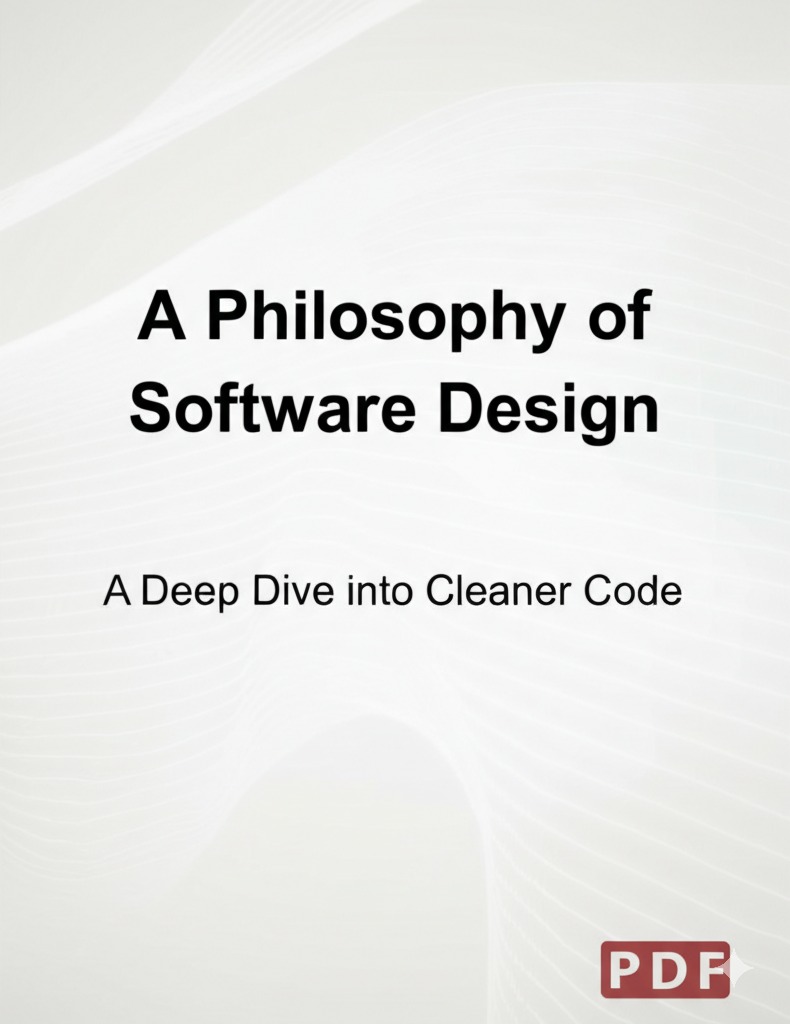A Philosophy of Software Design PDF: A Deep Dive into Cleaner Code
In the world of software engineering, there is an ever-growing demand for clean, maintainable, and scalable code. While many developers focus heavily on mastering programming languages and frameworks, the art of software design is often overlooked. That’s where “A Philosophy of Software Design” by John Ousterhout comes in—a book that has gained popularity among developers seeking clarity and simplicity in their coding practices.
In this article, we’ll explore the key takeaways from “A Philosophy of Software Design,” explain why it’s a must-read, and guide you on how to find and use the PDF version responsibly and legally.
What Is “A Philosophy of Software Design”?
“A Philosophy of Software Design” is a concise and powerful book written by John Ousterhout, a professor of computer science at Stanford University and the creator of the Tcl programming language. The book distills decades of experience into practical advice for writing better software.
Key Themes of the Book:
- Complexity is the enemy: Ousterhout emphasizes that managing complexity is the cornerstone of good software design.
- Modular design: Breaking down large systems into smaller, manageable modules.
- Deep modules: Modules should have a simple interface but rich functionality.
- Information hiding: Encapsulation is critical to reduce system interdependencies.
- Design it twice: The first solution is often not the best. Refinement is key.
These principles aren’t just theoretical—they are directly applicable to real-world software projects.
Why This Book Matters for Developers
For Beginners:
If you’re new to software development, this book will help you develop a strong foundation in design thinking early in your career.
For Experienced Developers:
Veteran coders often encounter messy codebases and legacy systems. Ousterhout’s approach offers tools to refactor and simplify existing projects.
For Teams:
The book is also a great resource for engineering teams to align on best practices and establish coding standards that scale.
How to Access the PDF Version Legally
Many developers search for “A Philosophy of Software Design PDF” hoping to get free access. However, it’s important to support the author and obtain the book legally. Here are some legitimate ways to access it:
- Official purchase: Buy it from sites like Amazon, Google Books, or Ousterhout’s website.
- University access: If you’re a student, check your university library for digital access.
- Company resources: Some companies provide free access to tech books for employee learning.
Note: Avoid unauthorized PDF downloads, as they violate copyright laws and hurt content creators.
Key Lessons from “A Philosophy of Software Design”
1. Tackling Complexity Head-On
One of the core messages is that complexity is cumulative and must be addressed early. This means:
- Avoiding excessive code nesting
- Eliminating redundant logic
- Using meaningful names and clear structure
2. Writing Deep Modules
A “deep module” hides more complexity than it exposes. For example:
- A simple API that does a lot behind the scenes is preferred over exposing multiple low-level methods.
This design leads to better abstraction and code reuse.
3. Embrace Incremental Design
Instead of designing the perfect system from the start, Ousterhout encourages developers to design iteratively:
- Prototype quickly
- Test ideas
- Refactor continuously
This leads to more resilient and flexible systems.
4. Documentation and Communication
Well-documented code is easier to maintain and collaborate on. The book encourages:
- Clear comments explaining the “why” behind decisions
- Consistent naming conventions
- Aligning code with team communication norms
Final Thoughts: Should You Read It?
Absolutely. Whether you are building your first app or managing an enterprise system, the insights from “A Philosophy of Software Design” are timeless. It bridges the gap between theory and practice, making it one of the most accessible and actionable books in software engineering.

Zain Jacobs is a writer for TheNetUse, providing in-depth reviews, tips, and insights on the latest software apps to help users maximize their digital experience.






